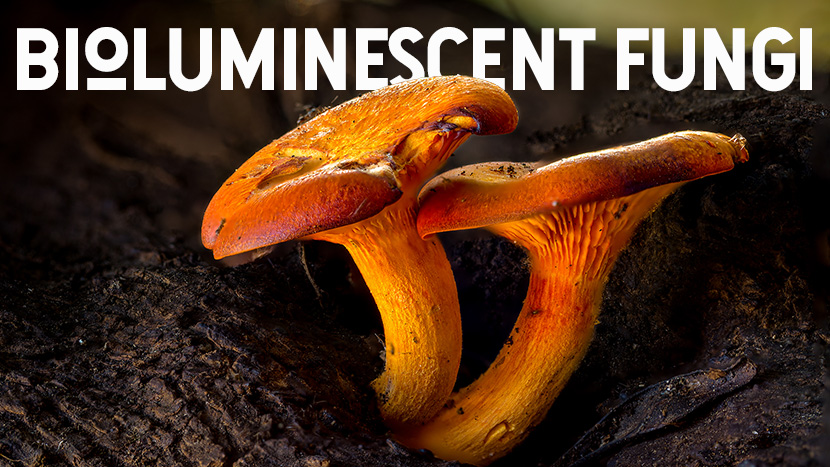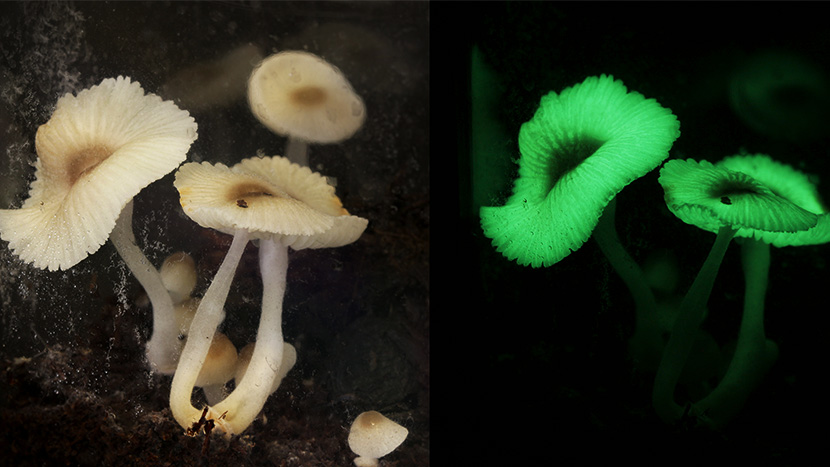The Magical World of Bioluminescent Mushrooms
Though you may be aware that fungi are some of the most diverse organisms on earth, did you know that there are bioluminescent mushrooms? These mysterious fungi light up the night with their eerie glow, capturing the imagination of scientists and nature enthusiasts alike. In this article, we will explore the captivating science behind this natural phenomenon, discover where to find these glowing wonders in the wild, and get a glimpse into the secrets they hold for our understanding.
The Science of Bioluminescence
Bioluminescence is the production and emission of light by a living organism. It occurs when a pigment known as luciferin reacts with an enzyme called luciferase in the presence of oxygen. This chemical reaction generates energy that is released as visible light. While bioluminescence is commonly associated with fireflies and certain marine creatures, there are many species of fungi that also share this quality.
Glowing Mushrooms: Types and Distribution
Though there are many bioluminescent mushrooms, and surely many that we haven’t even discovered yet, here are some common examples:
- Armillaria mellea: Also known as the honey mushroom, this species is found in forests across North America, Europe, and Asia. It typically grows on the trunks of trees, emitting a faint greenish-yellow glow.
- Omphalotus olearius: Commonly called the jack-o’-lantern mushroom, this orange bioluminescent fungus can be found in the Mediterranean region and eastern North America. It glows with a soft green light around its gills, but ironically, the light is often too dim to see with the naked eye.
- Mycena chlorophos: Renowned for its powerful greenish-blue luminescence, this mushroom species is native to subtropical regions of the Asia-Pacific. It grows primarily on rotting logs in the dense forest undergrowth.
The Purpose of Bioluminescence in Fungi
Scientists have formulated several theories to explain the purpose of bioluminescence in mushrooms. One popular hypothesis is that the phenomenon attracts insects and other small creatures, which help to spread the fungi’s spores. Another theory postulates that the glow aids in warding off predators by making the mushrooms appear poisonous or unpalatable. Others argue that bioluminescence serves as a unique form of identification for specific mushroom species.
Finding Glowing Mushrooms in the Wild
Bioluminescent fungi often grow on decomposing wood or in dark, damp environments. If you’re seeking out these living wonders, venture into forests, near old trees, or near the bases of fallen logs. Be sure to visit on a moonless night or under the cover of darkness to fully experience their captivating glow. Keep in mind that some bioluminescent mushrooms can be difficult to spot with the naked eye, so consider bringing a black light to make their luminescence more visible.
It’s also worth noting that not all remarkable mushrooms emit light. Some, like the blue meanies, which are known for their striking appearance and psychedelic properties (often referenced in popular culture) are beautiful and fascinating, but not bioluminescent. When dealing with any fungi, you should be curious to learn more, and cautious before collecting ans consuming them.
Friendly Reminder: Stay Safe and Protect the Environment
When exploring the forest at night in search of bioluminescent mushrooms, remember to exercise caution, dress appropriately, and use proper lighting equipment to ensure a safe and enjoyable experience. It is crucial to respect local wildlife and avoid disturbing their habitats. Additionally, be sure to follow any regulations or guidelines set by park rangers or conservatory authorities. For those eager to see these glowing marvels in the wild, a guided tour by a knowledgeable local expert can be a great way to ensure a safe and informative experience.
Uses and Potential Applications
Bioluminescent fungi carry a wealth of potential for practical applications. Due to their ability to emit light without the need for an external energy source, researchers are investigating ways to harness this natural luminescence for everyday use. This could include incorporating the glow of these fungi into decorative items, developing eco-friendly alternatives to traditional light sources, or even using them as bioindicators for assessing environmental conditions.
Bioluminescent Mushrooms in Culture and Folklore
The ethereal glow of bioluminescent mushrooms has captured the imagination of humans for generations, inspiring countless myths and legends. Some cultures believe that these fungi mark the resting places of spirits or serve as a pathway between the realms of life and death. Others view them as a source of mystical power, capable of granting wisdom and insights to those who seek their unique luminescence. These age-old beliefs serve as a testament to the enduring fascination that surrounds these remarkable organisms.
Future Research and Conservation
As our understanding of bioluminescent fungi continues to grow, so does the need for ongoing research and conservation initiatives. The habitat loss and pollution that threaten many of these species underscore the importance of preserving and protecting the diverse array of bioluminescent mushrooms that inhabit our planet. Continued study of these fungi will ensure that future generations can marvel at the enchanting glow of these remarkable organisms and gain valuable insights into the intricate workings of our natural world.
Closing words
Bioluminescent mushrooms provide a fascinating glimpse into the magical world beneath our feet. With their mysterious glow, they captivate our imagination and serve as a reminder of the countless wonders that nature holds. As we continue to unravel the secrets behind this unique phenomenon, these luminous fungi challenge our understanding of biology and encourage us to explore the diverse array of life thriving beneath the forest floor.


































































































